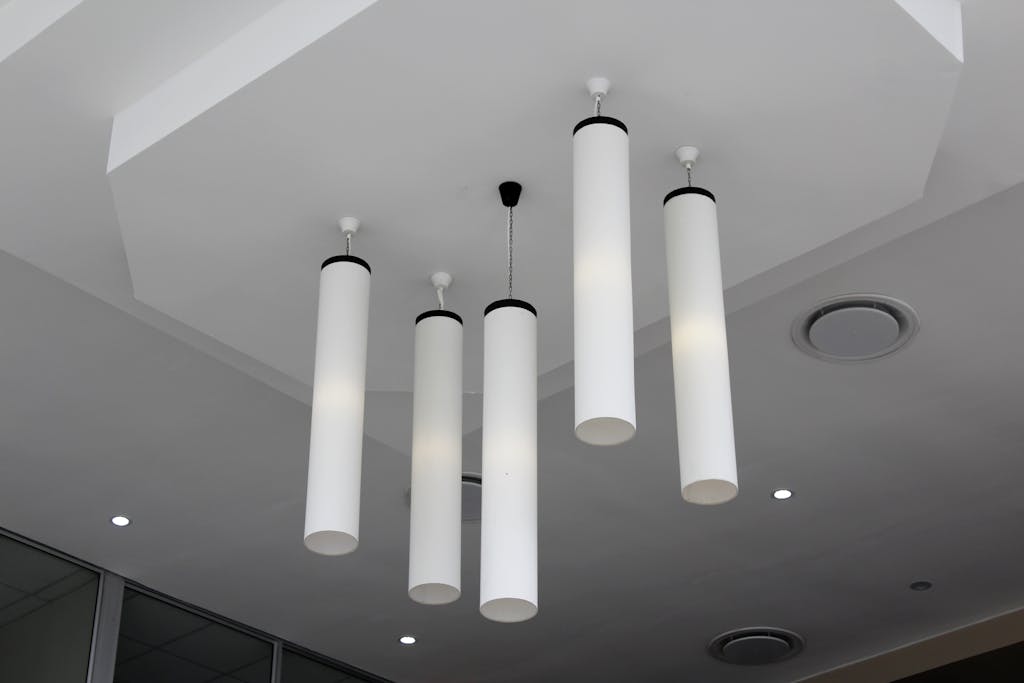Rethinking Sound in the Built Environment
For decades, architecture has primarily been a visual endeavor — driven by form, proportion, light, and material. But increasingly, a new dimension is being foregrounded: sound. With the growing recognition of how sound affects human behavior, comfort, and cognition, a new design philosophy is emerging — one that doesn’t just look good but sounds good. Welcome to the world of Acoustic Architecture.
Acoustic architecture is not just about reducing echoes in concert halls or soundproofing hotel rooms. It is about designing environments that respond to the human experience through sound: how voices carry in a library, how footsteps resonate in a museum, how silence shapes contemplation in a chapel. In this context, the ceiling — often overlooked — becomes a key player in shaping these sonic experiences.
From the curves of opera houses to the perforations in office tiles, Acoustic Architecture is the design response to the spatial character of sound. It examines how built environments either amplify, diffuse, or absorb acoustic waves, and how these properties influence well-being, communication, and performance. In a world increasingly tuned into sensory awareness, sound is no longer background noise — it’s central to how we live, work, and feel.
A Historical Echo: Sound in Classical Architecture
Historically, sound has always played a role in architecture — sometimes by accident, sometimes by intention. Ancient Greek amphitheaters were designed with astonishing acoustic precision, allowing actors’ voices to be heard clearly even in the furthest seats. In medieval cathedrals, the towering naves created long echoes that amplified religious chants, embedding spirituality in acoustics. Islamic architecture also understood this, with domes and vaults designed to carry the voice of the imam to every corner of the prayer hall.
However, with the rise of modernism and minimalism in the 20th century, many of these considerations were lost. Flat surfaces, hard materials, and open plans prioritized visual clarity but often resulted in sonic chaos.
The New Sound of Design: Why It Matters Today
In today’s dense, mixed-use urban environments, sound pollution is rampant. Open-plan offices echo with distractions. Hospitals struggle with noise levels that hinder healing. Schools often ignore how bad acoustics impair learning. This is where Acoustic Architecture is stepping in — not just to control sound, but to use it as a design tool.
Modern architects are now integrating acoustic performance from the start of a project. This includes:
- Ceiling baffles and clouds that absorb sound while adding sculptural elegance.
- Parametric perforations in wood or metal panels that are algorithmically calculated for optimal frequency control.
- Textured finishes and diffusive surfaces that scatter sound and reduce reverberation.
In all these strategies, the ceiling acts as a sonic membrane — mediating between the noise above and the silence below.
Case Studies in Acoustic Consciousness
Let’s consider a few examples where Acoustic Architecture has reshaped spatial experience:
- The Elbphilharmonie in Hamburg by Herzog & de Meuron features 10,000 uniquely milled acoustic panels that modulate the concert hall’s sound like a musical instrument.
- The Sydney Opera House, though notorious for early acoustic issues, underwent a series of interventions to recalibrate its ceiling and wall geometry for better sound distribution.
- Google’s campuses have embraced acoustic zoning — using suspended ceiling features that adapt sound quality to the needs of different spaces, from quiet pods to collaborative areas.
In these examples, acoustic design is not an afterthought; it is fundamental to the architecture’s success.

Beyond Noise Control: Sound as Emotion
The goal of acoustic architecture isn’t silence — it’s sonic harmony. Well-designed spaces don’t merely suppress noise; they orchestrate it. A whisper in a museum that carries, the satisfying muffled calm of a reading room, the dynamic reverberation of a performance space — these are emotional responses rooted in sonic memory.
In therapeutic environments, such as mental health centers, studies have shown that acoustic comfort reduces stress and enhances healing. In education, good acoustics improve speech intelligibility, comprehension, and academic performance. The ceiling, therefore, becomes a canvas not just for light or ventilation — but for emotional tone.
Ceilings as Acoustic Instruments
Modern materials have revolutionized what ceilings can do acoustically. Some of the latest developments include:
- Microperforated panels: Visually seamless but acoustically powerful, capable of absorbing mid to high frequencies.
- Bio-based absorbers: Made from hemp, mycelium, or recycled textiles, merging sustainability with performance.
- Smart ceilings: Integrated with sensors and dynamic systems that adapt acoustic properties in real-time based on room use.
Even in residential architecture, acoustic ceilings are emerging as a luxury. Home cinemas, music studios, and even bedrooms benefit from softening sharp reflections and creating peaceful ambiances.
Designing for the Future of Listening
As the world becomes louder and more crowded, the architecture of listening becomes critical. The post-pandemic shift toward hybrid work, mental wellness, and biophilic design means that buildings must cater to more than our eyes. They must listen, adapt, and respond.
Architectural education, too, is slowly integrating acoustic awareness as a design foundation — not just a technical layer applied at the end. Students are being trained to model sound, study its interaction with surfaces, and design for aural as well as visual impact.
Conclusion: When the Ceiling Becomes a Listener
The rise of Acoustic Architecture marks a paradigm shift in how we define good design. No longer limited to silence or noise control, it is about attuning space to the rhythm of human life. It is about recognizing that architecture is not mute — it has a voice, and more importantly, it hears.
So next time you walk into a room and feel calm, connected, or energized — look up. The ceiling might just be listening.
